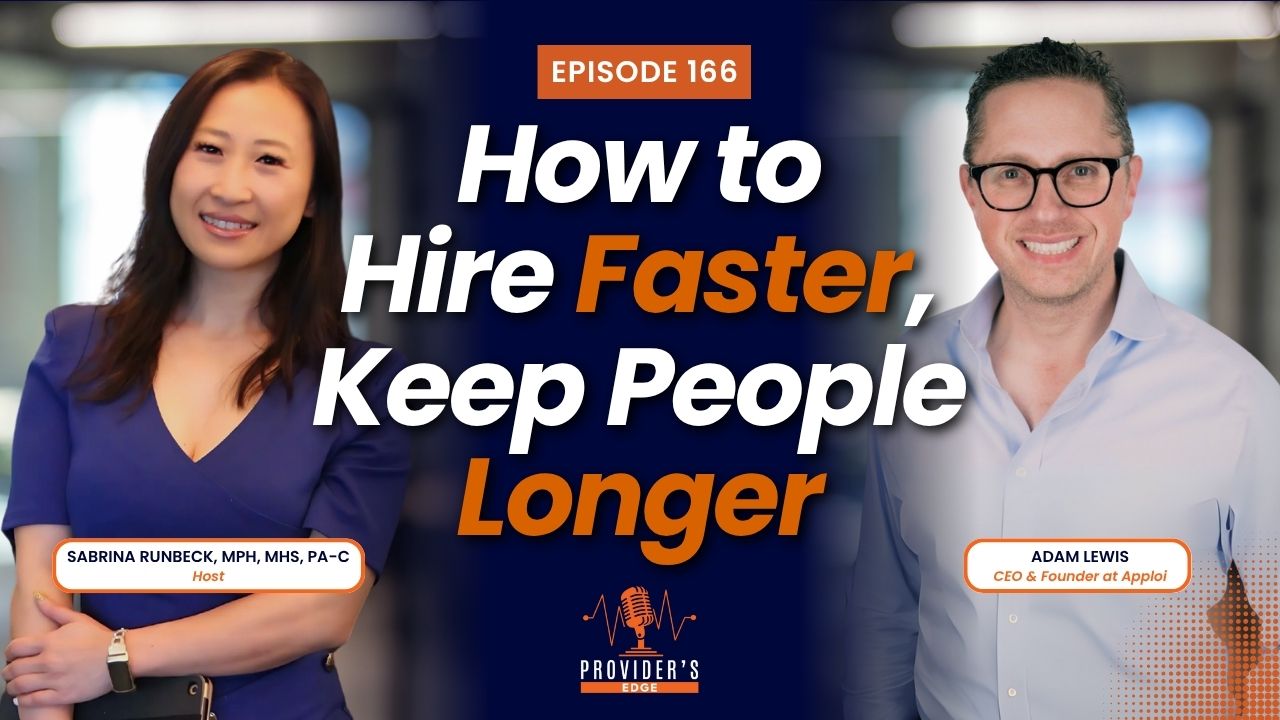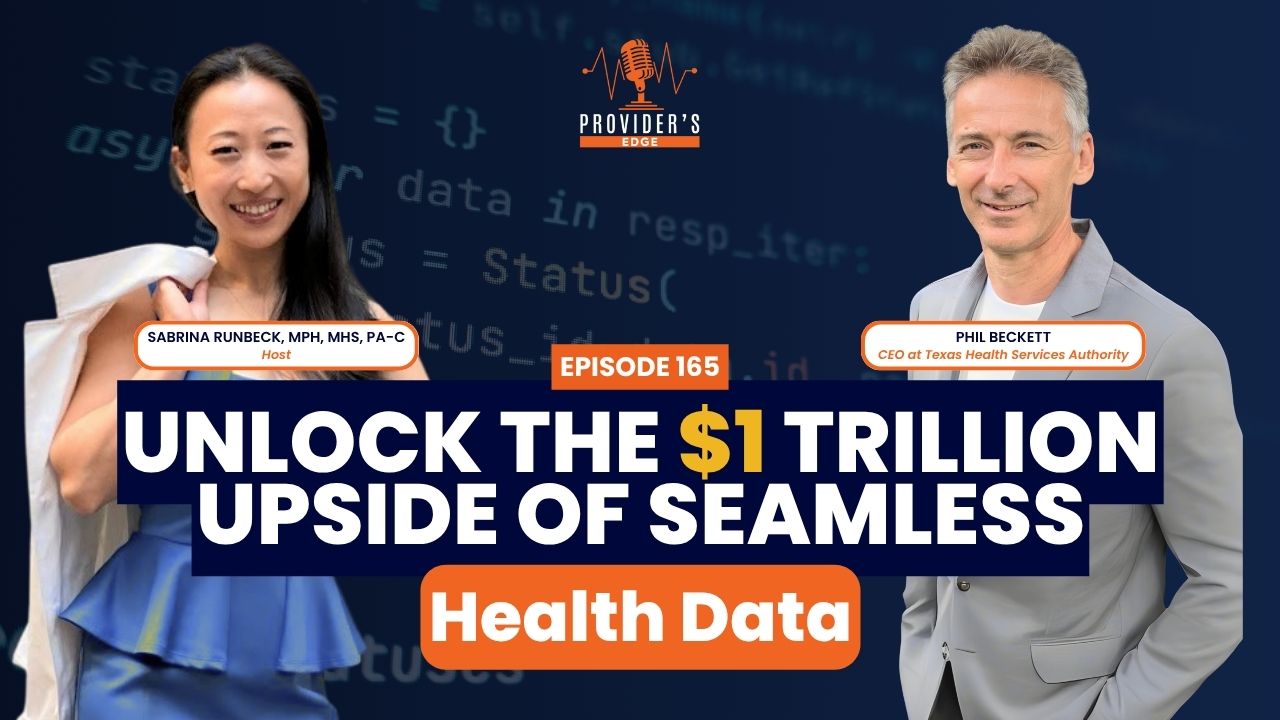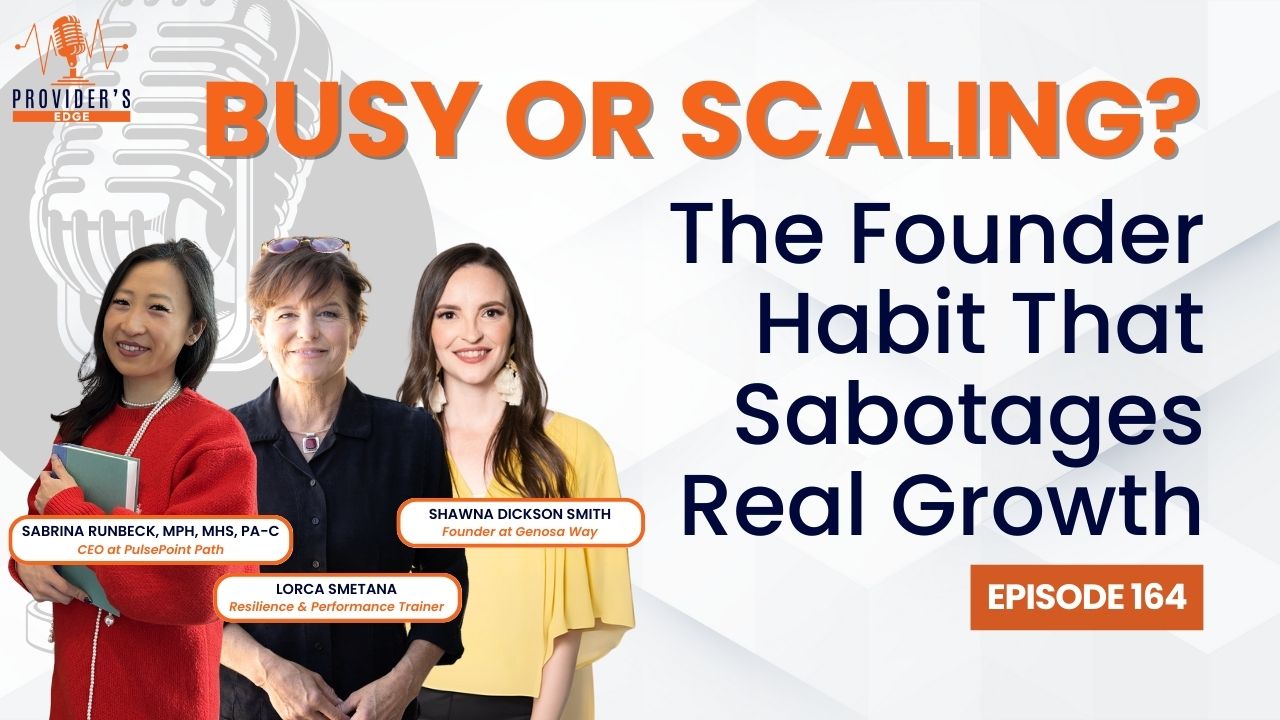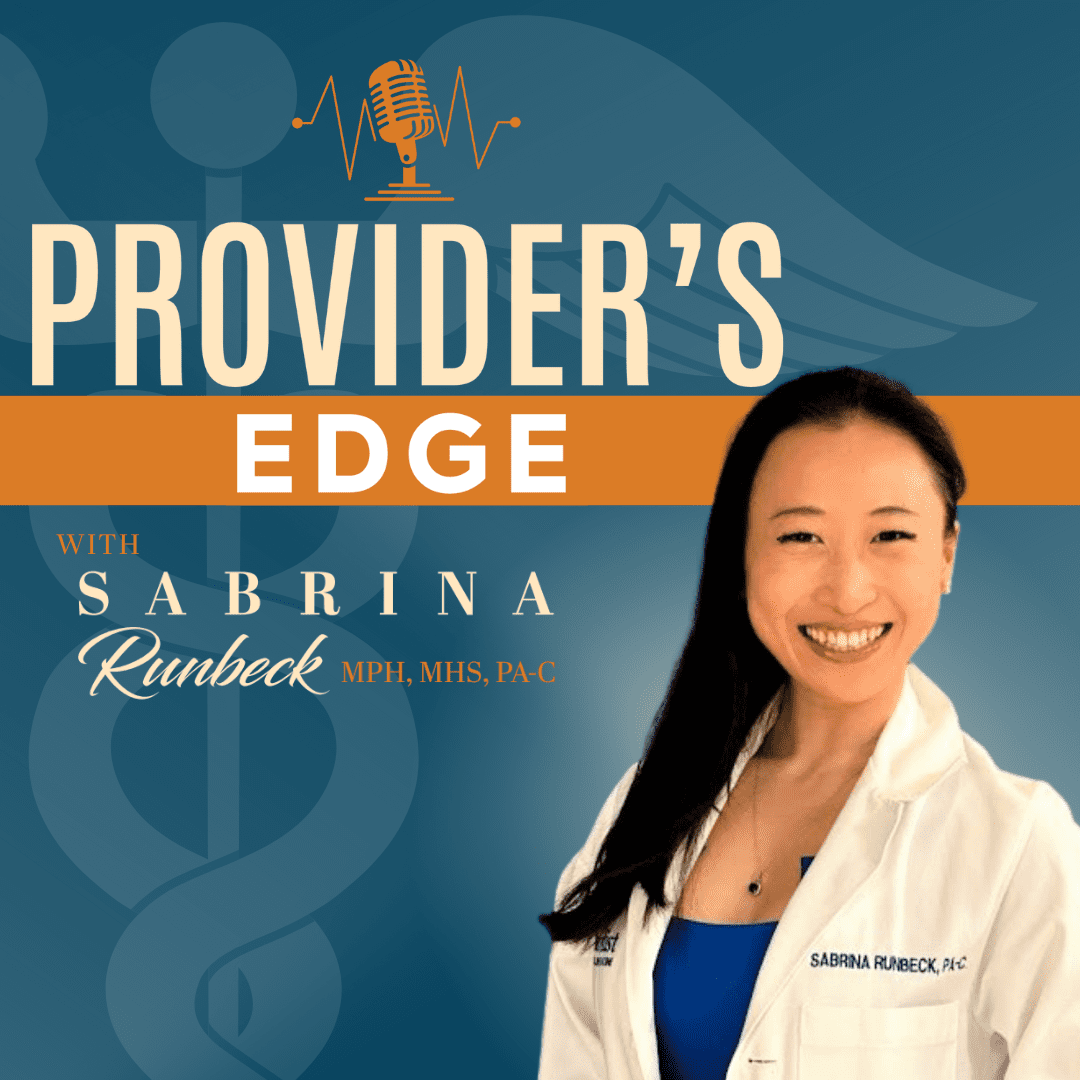
What Is the $1.2B Opportunity
in EHR Interoperability Nobody Is Talking About?
If you’re building in digital health, the conversation around interoperability isn’t new—but the real opportunity is still massively underleveraged.
Why? Because most solutions stop at "integration" when the real wins happen in workflow, care coordination, and user-centric delivery.
In this piece, you’ll hear from Eugene Paznikov, CEO of CYBX, and myself, Sabrina Runbeck, Co-Founder of PulsePoint Path, as we dissect how founders can turn tangled EHR systems into a strategic growth lever—and where $1.2B in value is quietly hiding in plain sight.
Listen anywhere you get your podcastin' on.
Live Interview
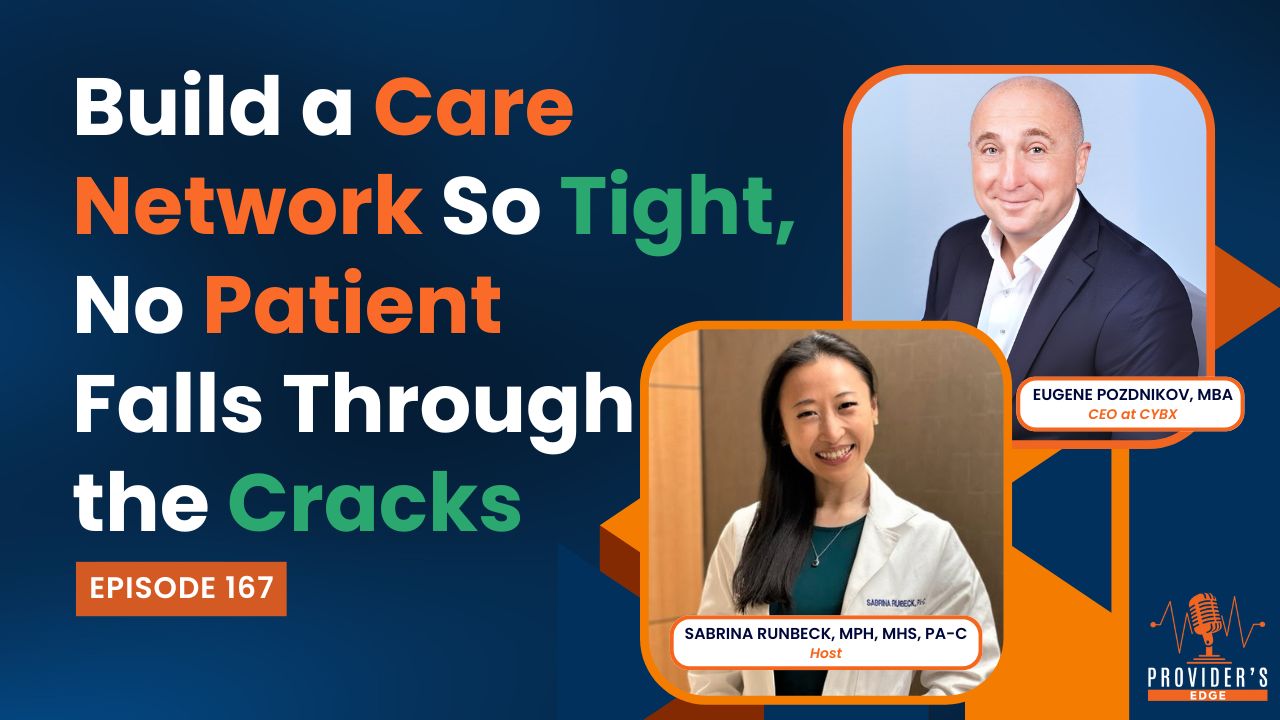
What Makes EHR Interoperability So Difficult—And So Valuable?
You can’t scale what you can’t connect.
Founders in the health tech space often underestimate how much care fragmentation costs. A report by the Center for Healthcare Quality and Payment Reform estimated that poor interoperability can cost the U.S. healthcare system over $20 million per hospital per year in duplicated tests, readmissions, and avoidable delays.
As Eugene shared, “We started by connecting systems, but soon realized the real need was connecting people with the *right* data in a usable format.”
So where's the opportunity?
When your product helps stakeholders actually understand and act on health data—clinicians, patients, caregivers—you’re not just building software. You're fixing a broken system.
How Should Founders Think About Workflow vs. Integration?
You can improve adoption by solving for workflow, not just data transfer.
Eugene broke down a real case: clinicians don’t care if your product uses FHIR or SMART on FHIR—they care if it helps them finish charting before they miss lunch.
“Founders must build with empathy, not ego,” I said during our chat. “If your tool adds more steps to a clinician’s day, you’ve already lost.”
Ask yourself: does my solution reduce clicks, reduce confusion, or reduce missed handoffs? If not, it’s just another tab on the browser.
What Happens When You Build with End Users in the Room?
You build adoption, not resistance.
Eugene’s team is beta-testing a HIPAA-secure, Slack-style care coordination tool by co-designing with clinical teams and facility leaders.
“The goal isn’t just to transfer data. It’s to keep everyone aligned on the care plan—no matter the EHR,” he explained.
Founders: if you want your product to stick, invite your users to shape it before your investors do.
Where Do CRM, EHR, and RPM Converge—and Why Should Founders Care?
They converge where the patient journey lives: outside the clinic.
Salesforce and HubSpot aren’t just for marketers anymore. More caregiving platforms are leveraging CRMs to coordinate tasks, track patient interactions, and manage family communications—all things EHRs are terrible at.
As we shift toward care-at-home models, your product’s value depends on how well it integrates across ecosystems—not just between hospitals.
Who’s Responsible for Clean Data—and Why Does It Matter?
Everyone. Because dirty data kills scaling.
Inconsistent patient identifiers, medication codes, and data formats make it impossible to create a seamless care journey. Eugene emphasized that no amount of AI or automation can fix bad data governance.
“Before you can get creative with AI,” he said, “you need to make sure the data foundation doesn’t collapse the moment you hit scale.”
Founders: your best UX feature might just be consistency.
What’s the Fastest Way to Start Building a Scalable Care Network?
Solve a specific use case, then expand.
Today, Eugene’s team connects over 1,000 long-term care facilities using PointClickCare with other EHRs for behavioral health, primary care, and specialty providers.
From secure document sharing to scheduling to data summarization—they’re building a communication hub that serves real care teams in real time.
This is the playbook: co-design with real users, simplify one broken process, then scale what works.
💡 Why Investors Are Watching CYBX and Eugene Pozdnikov
If you’re looking to back healthtech startups that cut costs, improve care continuity, and scale across fragmented systems, CYBX is one to watch.
Led by Eugene Pozdnikov, CYBX is tackling one of healthcare’s most expensive and misunderstood challenges—true EHR interoperability. With beta-tested tools already connecting thousands of long-term care facilities to acute and ambulatory settings, their platform doesn’t just “integrate”—it simplifies workflows and improves clinical decisions.
📈 For Investors Managing a Healthtech Portfolio…
Whether you're looking to reduce portfolio risk or increase post-investment traction, PulsePoint Path offers strategic acceleration for digital health founders:
- Leadership Maximizer
Strengthen executive team alignment, reduce internal bottlenecks, and source strategic hires without guesswork. - Pathfinder
Deep-dive SWOT analysis to help portfolio companies make sharp, data-backed strategic pivots—and avoid expensive misfires. - Capital Readiness Scorecard
Spot cash burn risks before they become red flags. Streamline operations and help founders clearly articulate their value to the next round of funders. - HealthTech Showdown
Want your strongest portfolio companies in front of vetted capital and health system leaders already looking to adopt?
Apply to present at HealthTechShowdown.com.
________________________________________________________
About Sabrina Runbeck
Sabrina Runbeck, MPH, MHS, PA-C helps healthcare technology companies scale sustainably—without burning out their teams or running out of cash.
She is the Co-Founder of PulsePoint Path and works alongside a 12-integrated board of advisors to help founders make strategic decisions that multiply impact and protect capital.
Her signature 5D Integrated System helps companies move beyond one-dimensional problem solving—what they think the issue is—and instead, builds an Empowered Ecosystem across leadership, team dynamics, and systems alignment. This is how founders evolve from early traction to 10x growth.
Sabrina is also a TEDx speaker, former Cardiothoracic Surgery PA, and trusted advisor with over 15 years of experience in public health, neuroscience, and business acceleration.
Recommended Podcast Episodes
Be a guest on our show
The Provider's Edge show is always looking to feature healthcare change-makers and celebrate the work they are doing to improve healthcare.
Together, we can encourage other healthcare entrepreneurs and startup founders to up-level their businesses.
If you or someone you know could be a good fit as a guest on the show, please click on the bottom below to apply as a speaker.
Healthcare Entrepreneurs!
I can help you gain visibility and credibility in the right circles so you can accelerate your mission and profitability!
After overcoming burnout working in surgery, I went back to my roots in neuroscience and public health. I learned the importance of building key human relationships with my team throughout our organization.
While helping healthcare executives and entrepreneurs to get out of the day-to-day operation of their practice, I realized I needed more visibility and more connections to reach my ideal clients.
Once I set out to be highly visible in the right circles, I was able to leverage my network of strategic partners to convert clients 5x higher than any other marketing channel I had tried previously.
Now I help healthcare change-makers to accelerate their impact and increase profitability by gaining visibility and credibility with the right strategic partners.
My clients no longer worry about where their next client is coming from, the need to plan additional budget for ads spending, or losing the ability to connect with others because their social media account is shut down.
If you want to share your social mission with the world and gain pivotal supporters that become loyal clients... then you are in the right place, with the right consultant who is also a recovered clinician.


